Most travel brands struggle to create seamless digital experiences that guests actually remember. Frustration builds when check-ins take too long or hotel apps fail to meet basic expectations.
This is exactly where VisionPro for Travel creates a turning point.
The global travel and tourism app market is growing at 18.50% CAGR, with North America leading at 35.6% and contributing over USD 231 billion in 2024. (Source)
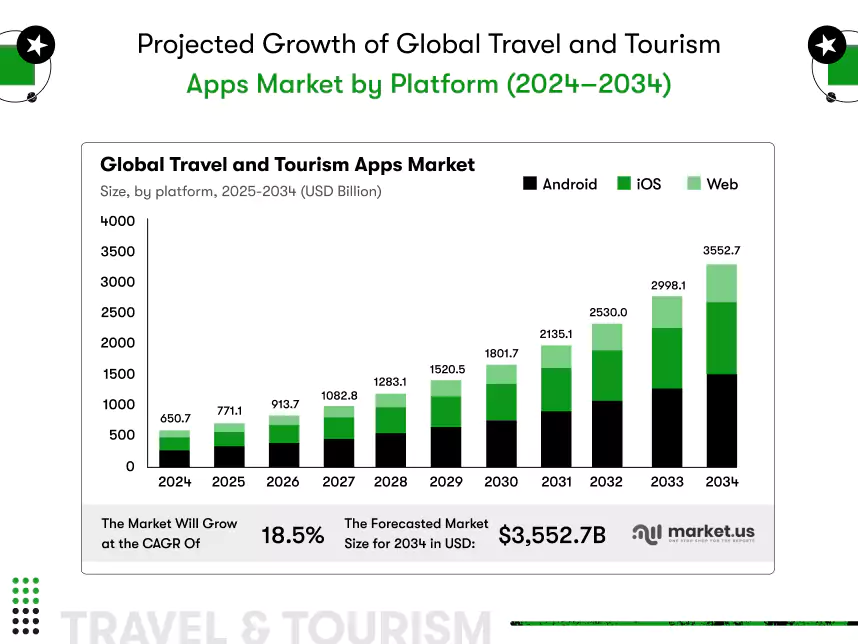
Yet many hospitality businesses still rely on outdated systems that limit personalization and reduce guest satisfaction.
In this blog, we speak directly to CTOs, hotel executives, and decision-makers. You’ll learn how VisionOS apps for hotels can simplify service delivery, enhance in-room experiences, and create deeper guest connections through immersive, intuitive interfaces.
If your brand is focused on long-term loyalty, smarter operations, and stronger digital differentiation, now is the right time to explore vision pro use cases and see what’s possible with VisionOS.
Now that digital convenience defines brand loyalty, let’s look at the key challenges most hotels, resorts, and travel brands are still struggling with.
What Are the Real Guest Experience Challenges in Travel and Hospitality?
Today’s tourists expect more than a tidy room. From booking to checkout, travelers and tourists want every digital interaction to feel smooth, thoughtful, and connected.
Despite investments in smartphone apps and booking tools, most hotels still rely on disconnected systems that frustrate guests at every stage of their stay. This is where VisionPro for travel presents a smarter path forward, and one that connects every moment of the guest journey through a single immersive platform.
Below are five common issues that continue to limit both guest satisfaction and business performance across the hospitality industry.
1. Disconnected Digital Systems
Most hotels operate with separate platforms for booking, check-in, room service, and local recommendations.
Guests must switch between apps or physical interfaces just to complete simple actions. This inconsistency makes the experience feel disjointed and frustrating.
Guests lose trust in the brand when nothing feels connected. Hotel operators also lose insight into guest behavior because the data remains fragmented.
2. Long Check-In Times
Guests often arrive tired and ready to settle into their room. Long lines at the front desk or poorly designed kiosks immediately create stress.
Manual check-ins delay the process and reduce opportunities for meaningful first impressions.
Hotel staff must divide their attention between checking guests in and handling service requests. This results in slower service and fewer chances to build strong guest relationships.
3. Limited Personalization in Rooms
In-room technology typically follows a one-size-fits-all model. Guests cannot save their preferences or control their environment easily.
Controls for lighting, temperature, or entertainment are often outdated or overly complicated. Even repeat visitors receive the same default settings as first-time guests.
Without personalization, the room fails to create a comfortable or memorable experience.
4. Inconsistent Concierge Support
Many guests need local guidance or service help during their stay. Traditional concierge desks often respond slowly or rely on generic, printed recommendations.
Guests who expect fast, personalized support are often disappointed. Inconsistent service quality can damage the brand’s credibility.
Hotels lose valuable chances to enhance the guest journey when their support systems cannot adapt to individual needs.
5. Missed Opportunities for Local Engagement
Travelers typically use outside apps to explore local attractions, book tours, or find restaurants. This reduces the hotel’s influence and involvement in their experience.
With Apple Vision Pro trends pushing immersive trip planning and real-time discovery, guests now expect hotel apps to do more than just list options.
When a hotel app fails to offer helpful planning tools, guests stop using it entirely. This creates missed revenue from in-house services such as guided tours, spa bookings, and restaurant promotions.
Hotels become a place to sleep rather than a partner in the overall travel experience.
VisionOS apps for hotels directly address these gaps. These applications combine booking, room control, concierge, and local discovery into one immersive experience. Guests gain more control, and hotels gain more insight without increasing complexity in their existing operations.
How Can VisionPro for Travel Help Solve These Problems?
You want to create a guest journey that feels smooth, intuitive, and fully on-brand. VisionPro for travel helps you get there by removing scattered tools and replacing them with immersive VisionOS apps.
These apps centralize everything your guests need, reduce friction at every step, and simplify service delivery without requiring changes to your core hotel systems.
Let’s look at how VisionOS helps you solve the biggest challenges.
1. One Interface for Every Guest Interaction
When people stay at your property, they expect simplicity. VisionOS apps for hotels let you offer one central interface where guests can check in, adjust their room settings, request services, and explore the area.
Everything works through gestures or voice control within their Vision Pro headset. You no longer need to direct them to multiple screens or third-party tools.
With this unified platform, you increase engagement, reduce confusion, and gain deeper insight into what guests want throughout their stay.
2. Personalized Hotel Check-In with VisionOS
No one likes standing in line after a long trip. With personalized hotel check-in with VisionOS, your guests can verify their identity, explore available upgrades, and receive a personalized welcome using immersive visuals inside the headset.
They walk straight to their room without delays. Your lobby stays calm, your staff stay focused, and your guests start their stay with a positive impression.
This type of convenience strengthens your brand and makes guests more likely to return.
3. Smarter In-Room Experience
Comfort is one of the most important factors shaping how people feel about their stay. VisionOS gives guests full control over lighting, temperature, curtains, and media through a clear and responsive interface.
You eliminate the need for wall switches or remotes that often cause confusion. Returning guests can have their preferences saved and applied automatically, making the room feel familiar as soon as they enter.
With VisionPro for Travel, you create an in-room experience that feels intelligent, personal, and easy to enjoy.
4. Interactive Concierge That Feels Personal
Waiting in line or calling the front desk for basic requests frustrates your guests. VisionOS solves this with a digital concierge that feels responsive and helpful. Through the headset, people can get recommendations, view services, make bookings, and get answers without leaving their room.
This consistent, fast support leads to better service reviews and more opportunities to increase revenue through upsells.
With Vision Pro for the hospitality industry, you transform your concierge from reactive to proactive without hiring more staff.
5. Immersive Travel Planning Using VisionOS
Your hotel has a chance to be more than a place to sleep. Through immersive travel planning using VisionOS, you can let guests explore local tours, events, restaurants, and hotel-led experiences in 3D. They preview activities in real time, make informed choices, and book immediately.
Well-built Vision Pro apps turn planning into a branded, immersive experience. This increases guest engagement and helps you promote high-margin services without adding complexity.
6. A Unified Experience That Strengthens Your Brand
When you build with VisionOS, you don’t just add new features. You create a unified digital layer that connects every guest interaction to your brand’s promise. Travelers remember how easy it felt to navigate, book, request, and plan.
Hotels that adopt VisionOS are starting to redefine how guests interact with their brand across every digital touchpoint. VisionOS apps are not just a technology upgrade, they are a smarter way to deliver better service, improve operations, and stand out in a crowded market.
If you’re looking to hire VisionOS app developers but aren’t sure how to find the right fit, read our how to hire visionOS app developers guide for a clear, step-by-step approach.
Best VisionOS Use Cases in Travel and Hospitality
If you’re ready to upgrade your digital guest experience, this is where to start. The most effective VisionOS use cases in travel and hospitality are already helping hotels, resorts, and travel brands deliver more value without overcomplicating operations. These applications solve specific problems and support revenue goals, staff efficiency, and brand loyalty.
1. Smart Navigation from Check-In to Checkout
When people arrive at your hotel, they should immediately know where to go. VisionOS apps provide real-time navigation through the Apple Vision Pro headset.
Guests follow visual directions to reach the front desk, elevators, or specific amenities without asking staff for help.
This improves the arrival experience and frees your team to focus on higher-value service tasks. For large hotels and resorts, this feature can also reduce reliance on printed maps and signs.
2. AI-Guided Tours Using Apple Vision Pro
Your property may have a rich history, architectural features, or cultural details that deserve more attention. With Apple Vision Pro in tourism, you can create self-guided, interactive tours that explain these elements in real time.
Visitors hear voice narration, see visual highlights, and feel more connected to the space. You can also use this feature to promote on-site services such as spa packages or art exhibitions. These experiences require no additional staff and work around the clock.
3. 3D Room Previews Before Booking
When guests are deciding between standard and premium rooms, photos often fail to show the full value. VisionOS apps let travelers take a virtual walk through space. They can explore layout, lighting, furnishings, and amenities in high detail before they book.
With VisionPro for travel, your team builds confidence into the booking process. Guests are more likely to commit to higher-value stays when they know exactly what to expect.
4. Real-Time Service Upgrades via VisionOS
You can automatically present upgrades and service offers at the right moment during a guest’s stay. If a better-view suite or a private dining slot becomes available, VisionOS can notify the guest through their headset.
The offer appears visually and can be accepted instantly through voice or gesture. These interactions feel like thoughtful recommendations, not sales pressure.
Your hotel increases revenue while keeping service consistent and effortless.
5. In-Room Control and Customization
Guests expect to control their environment easily. VisionOS apps allow full access to lighting, temperature, entertainment, and more through an intuitive interface. Returning visitors can have their preferences remembered and applied automatically.
With VisionOS apps for hotels, your rooms adapt to the person staying in them. This improves comfort while reducing support requests to your team.
6. Immersive Travel Planning Within the Hotel
Travelers usually plan activities through outside platforms, which disconnects them from your brand. With immersive travel planning using VisionOS, you can let people explore local options inside your hotel’s digital ecosystem.
This type of digital immersion is already proving valuable across industries, as seen in the Vision Pro automotive industry app solution, where travelers preview destinations and services in real time.
Guests view 3D previews, check schedules, and book tours or dining experiences from their room. This keeps them engaged with your services and strengthens your role throughout their trip.
7. Fully Branded Guest Interfaces
Every part of your guest experience should reflect your brand identity. VisionOS lets your team design custom interfaces that match your visual style and tone.
From welcome messages to service requests, the entire interaction feels aligned with your hotel’s personality. This improves brand recognition and creates a stronger emotional connection with returning guests.
These VisionOS use cases in travel and hospitality are already proving useful for hotel groups, resorts, and destination properties. If your goal is to increase satisfaction, grow service revenue, and modernize the guest journey, VisionOS gives you the tools to act now. You can begin without needing to rebuild your c0pore systems.
If you’re unsure which platform suits your XR app development goals, explore our in-depth guide on Apple Vision Pro vs Meta Quest 3 XR App Development to make a confident decision.
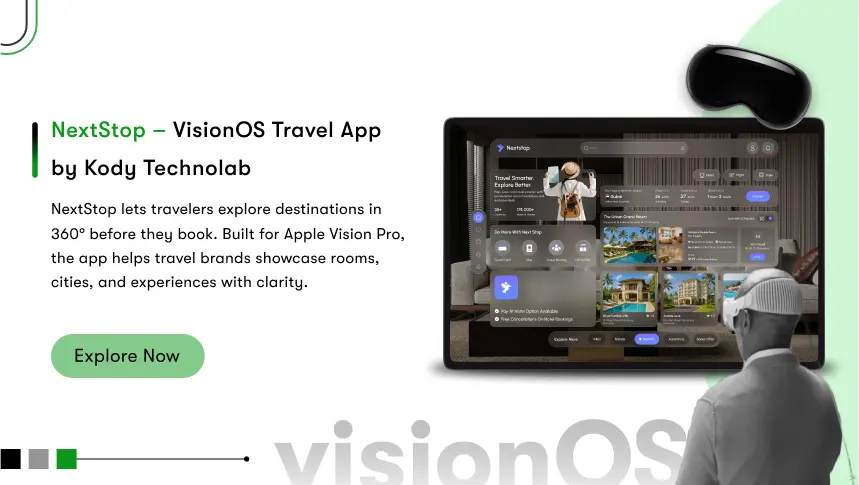
Why the Hospitality Industry Needs Vision Pro Now
Guests today expect every interaction with your hotel to be fast, personal, and effortless.
If your current systems make them wait or feel disconnected, they will notice. Vision Pro for the hospitality industry gives you the tools to redesign these moments into something more valuable. You no longer need to rely on outdated digital tools or legacy check-in procedures that frustrate travelers.
The opportunity is clear. Hotels that move now will gain a competitive edge that late adopters will struggle to catch.
Guest Expectations Continue to Rise
Travelers now expect smooth booking, quick service, personalized room controls, and recommendations that match their interests. These are standard expectations in today’s hospitality market.
If your hotel fails to meet them, people will remember and associate your brand with friction.
With VisionPro for travel, you remove the barriers that frustrate your guests. From check-in to in-room settings and local planning, everything works as one connected system.
- Your brand feels modern.
- Your team handles fewer repetitive tasks.
- Your guests enjoy a stay that feels thoughtful and consistent.
Digital Experience Now Defines Loyalty
Location and price still matter, but they are no longer your only points of differentiation. Travelers return to properties that feel easy and rewarding to stay with. VisionOS apps for hotels make that possible by giving guests more control and more clarity throughout their experience.
When people can check in easily, personalize their environment, and discover local experiences in real time, they are more likely to return.Well-designed VisionOS apps for hotels increase guest satisfaction while opening new ways to generate revenue from upgrades, services, and local partnerships.
You Can Modernize Without Replacing Your Core Systems
One reason many hotels delay tech upgrades is fear of disruption. That concern is valid. However, VisionOS apps do not require you to remove or replace your existing systems. Instead, you can connect them through secure APIs or middleware to build a smooth front-end experience.
This is what makes VisionOS use cases in travel and hospitality so powerful. You get a smarter guest interface while keeping the backend systems your team already understands.
Acting Early Gives You a Long-Term Advantage
Your competitors are already exploring mixed reality and immersive tech. Waiting puts your brand in a reactive position. The hotels and resorts that implement VisionOS first will define the new standard of hospitality.
With Apple Vision Pro in tourism, you take control of how guests experience your property. You improve loyalty, simplify operations, and prepare your team for the future of service. If you already have a digital platform, this is the right time to convert your app to visionOS and deliver a more immersive, intuitive experience.

Can VisionOS Apps Integrate With Existing Hotel Systems?
Yes, VisionOS apps can integrate with your existing hotel systems without requiring a full rebuild or infrastructure overhaul.
They are designed to connect seamlessly with the tools your property already uses, including property management systems (PMS), customer relationship management (CRM) software, and internal concierge systems.
You do not need to replace your tech stack. You only need a strategy to connect the right pieces together.
Integration Through APIs and Middleware
VisionOS apps for hotels support API-based integration with most modern hospitality software platforms. This means you can pull and sync data from your PMS or CRM to deliver personalized services inside the guest’s headset.
With middleware or custom connectors, even older systems can be included in the experience.
When a guest checks in, their profile can instantly trigger room preferences, welcome messages, upgrade options, or tailored concierge recommendations. The same logic applies to service requests, billing, and loyalty programs, all inside one interface.
With VisionPro for travel, your hotel becomes smarter without increasing your operational complexity.
Avoiding Expensive Overhauls
One of the biggest misconceptions about new technology is that it requires massive infrastructure changes. VisionOS apps do not demand that level of disruption. You can layer them over your current systems to create a modern guest interface that still connects to everything behind the scenes.
This allows your hotel to move forward with confidence. You protect your existing investments while adding a powerful new guest layer that improves satisfaction and drives more engagement.
As you build your digital roadmap, focus on VisionOS apps for hotels that support modular, scalable integration. Teams exploring vision pro app development can benefit from this flexibility, which reduces the risk of system conflict or performance issues.
A Strategy That Works with What You Already Have
Your internal systems already store valuable data, guest history, preferences, past purchases, and more. VisionOS apps can tap into that data to create real-time, meaningful interactions that feel personal and timely.
With Apple Vision Pro in tourism, the opportunity lies in bridging what you already have with what your guests now expect. You do not need to wait for a full technology refresh to deliver a smarter experience. You can begin with a simple integration strategy that connects key services and grows from there.
How to Get Started With VisionPro App Development
VisionOS development for hospitality should not feel like a tech experiment. It should be a strategic move to eliminate friction, delight guests, and streamline your operations.
The path to a successful launch starts with internal clarity, focused execution, and a partner who understands what service means inside a real hotel.
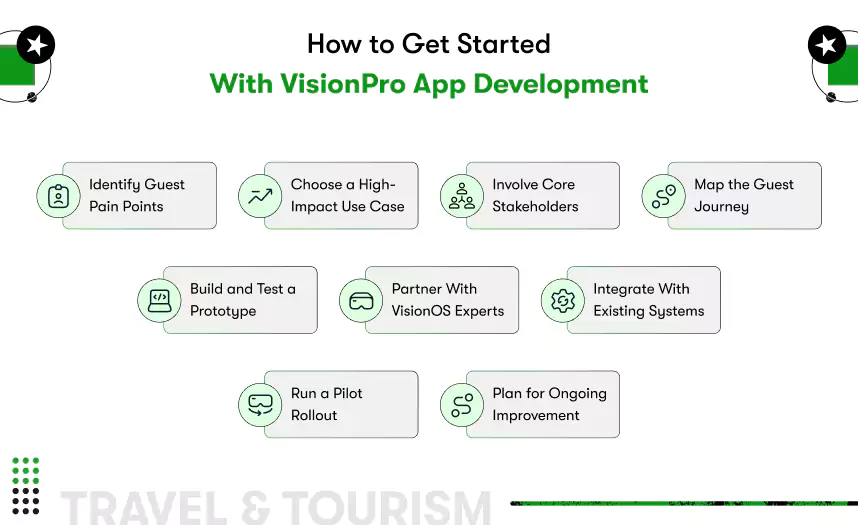
This is your playbook to build with purpose and roll out with confidence.
1. Discover What Breaks the Guest Experience
Every hotel has weak points. You might hear the same complaint about check-in, or see guests ignore your app because it lacks value.
Instead of guessing what to fix, talk to your front desk, concierge, housekeeping, and even returning guests. Ask where the process feels slow, confusing, or disconnected.
These insights help you identify the one guest moment that needs immediate improvement. That moment becomes your starting point for building with VisionOS apps for hotels.
2. Focus on a High-Impact Use Case First
You do not need to build everything at once. Start with a single use case that improves a major guest interaction. This could be smart check-in, in-room customization, or interactive discovery of on-site experiences.
A focused rollout makes success easier to measure. It also creates a model that helps your internal teams and leadership understand the value of VisionPro for travel.
3. Involve Key Stakeholders From the Start
VisionOS development requires coordination across teams. Your IT team, operations leaders, and guest service managers should all be involved early. Each team sees a different part of the guest journey. When they collaborate, the final product becomes more realistic, more usable, and more impactful.
This alignment also prevents surprises during rollout, keeps your teams engaged, and builds internal support for expansion.
4. Define the Full Guest Journey Inside the App
Sketch out every interaction. What does the guest see when they check in? How do they explore room features, request services, or preview local attractions? Every action should feel intuitive and connected to your brand experience.
This detailed planning phase ensures your app is built with intention, not assumptions. It also provides clear guidance for your development team.
5. Create a Prototype Your Team and Guests Can Test
Before any coding starts, your development partner should create a prototype with basic navigation, sample features, and branded visuals. Test this prototype internally with staff and loyal guests. Focus on usability, clarity, and speed.
This allows your team to offer feedback, identify gaps, and refine features before investing in full development. Many hotels begin with personalized hotel check-in with VisionOS or guided lobby navigation as their first prototype feature.
6. Choose a Partner With Hospitality-Specific VisionOS Expertise
You are not building a demo. You are building a service tool that must work under live operational pressure. That’s why your development partner should understand both the VisionOS ecosystem and the hospitality environment.
Kody Technolab specializes in VisionOS apps for hotels. Our team builds spatial apps that connect smoothly with your PMS, CRM, and service platforms. We prioritize real-time performance, guest privacy, and brand consistency.
7. Connect to Your Current Systems Securely
You do not need to replace your core systems. VisionOS apps integrate through secure APIs or middleware to sync guest data, preferences, and service triggers. This lets your new app run alongside your existing tech stack while improving the guest-facing layer.
You get the benefits of Apple Vision Pro in tourism without putting your operations at risk.
8. Run a Pilot Program to Collect Real Feedback
Start small. Roll out the VisionOS app in a limited section of your property. This could be a VIP guest floor, a test group of suites, or your internal team. Track guest usage, staff feedback, and operational metrics. Adjust your app based on real-world results.
This approach protects your brand while giving you proof of concept for a wider rollout.
9. Build for Continuous Improvement, Not One-Time Launches
Your VisionOS app should grow with your hotel’s goals. Track performance, review guest feedback, and plan iterative updates. Add new features like immersive restaurant previews, spa bookings, or loyalty perks as you go.
With VisionOS use cases in travel and hospitality expanding quickly, your app should evolve to stay competitive.
When you plan clearly, collaborate early, and develop with purpose, VisionOS becomes a serious asset to your guest experience strategy. As you move from idea to execution, knowing how to build and submit visionOS apps properly ensures a smoother launch.
Your team becomes more efficient, your guests feel genuinely connected, and your brand earns long-term loyalty through thoughtful, streamlined service.

Why Kody Technolab Is the Right VisionOS Development Partner
The right VisionOS development partner helps you transform your guest experience without disrupting daily operations or adding unnecessary complexity. At Kody Technolab, we build VisionOS apps that are designed to function inside real hotels, resorts, and travel operations.
We Understand Hospitality First
Our process begins with your reality. We talk to hotel executives, operations teams, and guest service leaders to understand where your biggest experience gaps exist.
Then we design VisionOS solutions that fit into your current environment and support the way your staff already works.
We never push generic tech that disrupts your daily service flow.
We Build VisionOS Apps for Hotels That Actually Work
Our team handles more than just interface design. We create fully integrated guest tools that connect with your property management system, guest profiles, loyalty platform, and service delivery systems.
Every app we build solves a clear problem and is tested with real guests inside real hotel environments. Whether it’s personalized hotel check-in with VisionOS or interactive concierge tools, we make the experience feel natural for both your team and your travelers.
You Stay Focused on Service. We Handle the Technical Build.
You do not need to manage APIs, systems integration, or app maintenance. We manage the full development lifecycle from planning and prototyping to launch and support.
When you hire VisionOS app developers with hospitality expertise, your internal team can stay focused on service while we handle the technical details. This approach ensures fast adoption, low risk, and a clean experience from day one.
Let’s Talk About What VisionPro for Travel Can Do for You
You don’t need to decide everything today. Start with a conversation. Share one guest experience challenge your brand wants to solve. We will show you how a VisionOS app can help.
If your goal is higher satisfaction, smoother operations, and smarter service delivery, we’re ready to help you build the right solution.
Conclusion
VisionOS is not just a visual upgrade. It’s a chance to rebuild how travelers connect with your hotel, your services, and your team. Guests expect faster, more personalized interactions across every digital touchpoint. “VisionPro for Travel helps your brand fulfill that promise while uncovering new ways to grow service revenue and loyalty.
This shift is not just about innovation. It’s about staying relevant, competitive, and easy to choose again. Hotels that act now will define the guest experience standard others follow.
From check-in to checkout, VisionOS apps can turn disconnected moments into one seamless, branded journey. If you want to lead in guest satisfaction, now is the time to act.Kody Technolab is a VisionOS App Development Company that helps hotels and travel brands build immersive, reliable, and scalable guest experiences. Our team brings both technical skill and hospitality understanding to every project, so your guests feel the difference from day one.

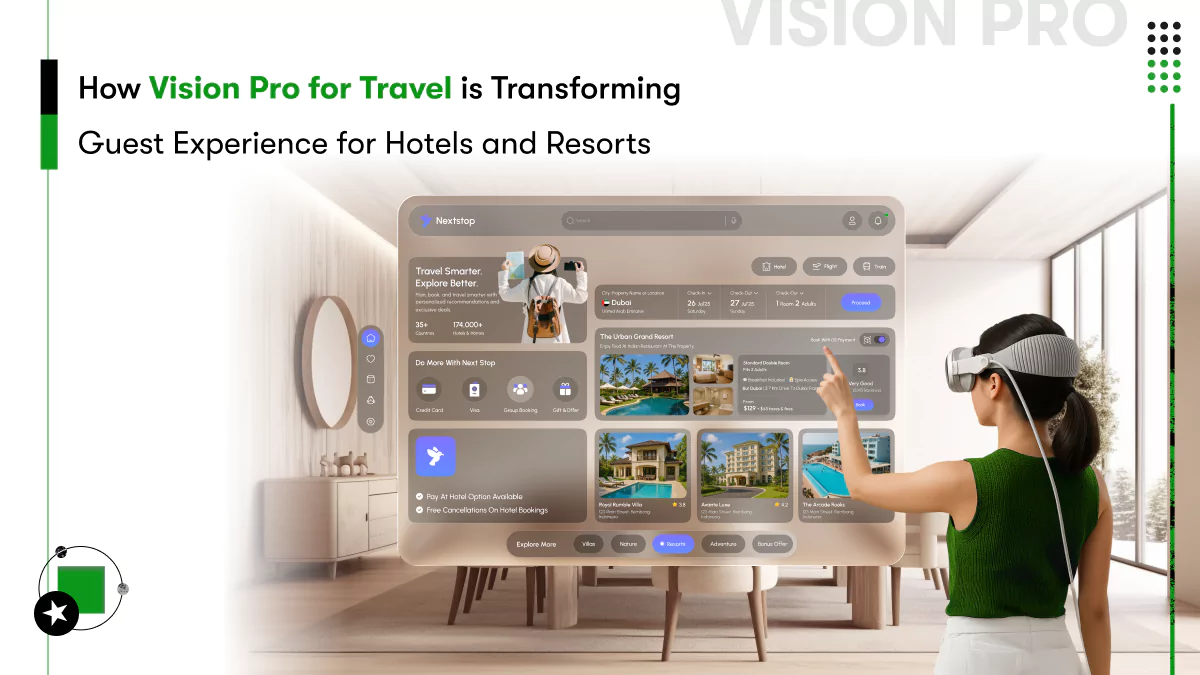
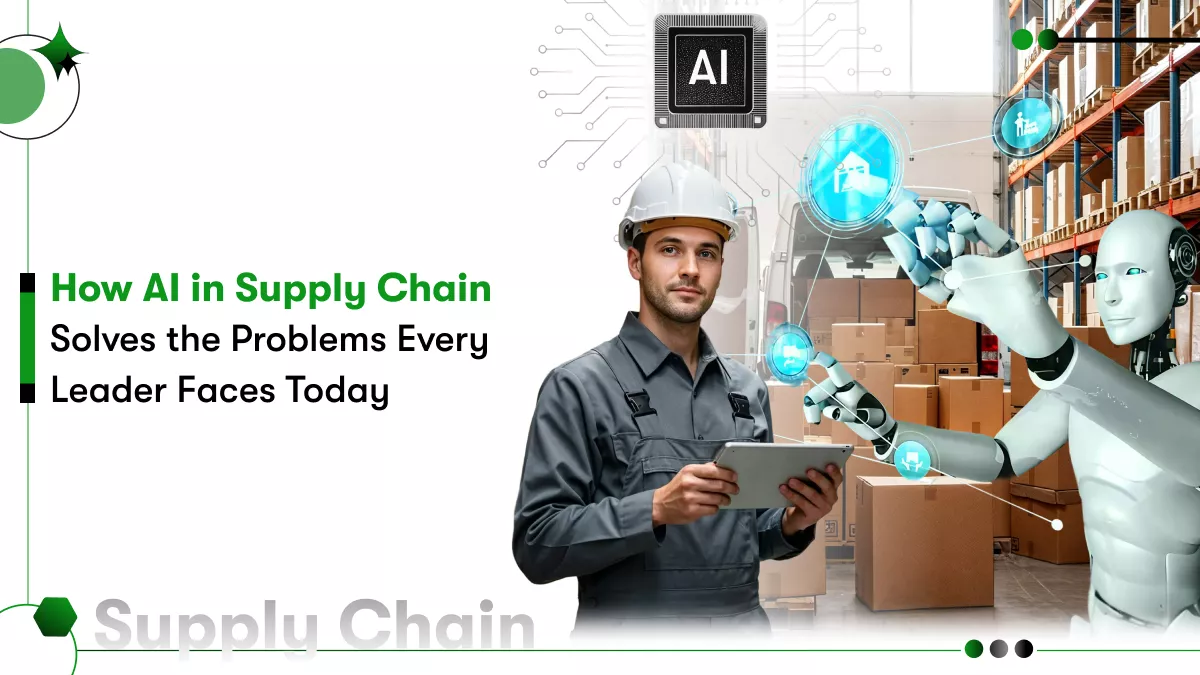
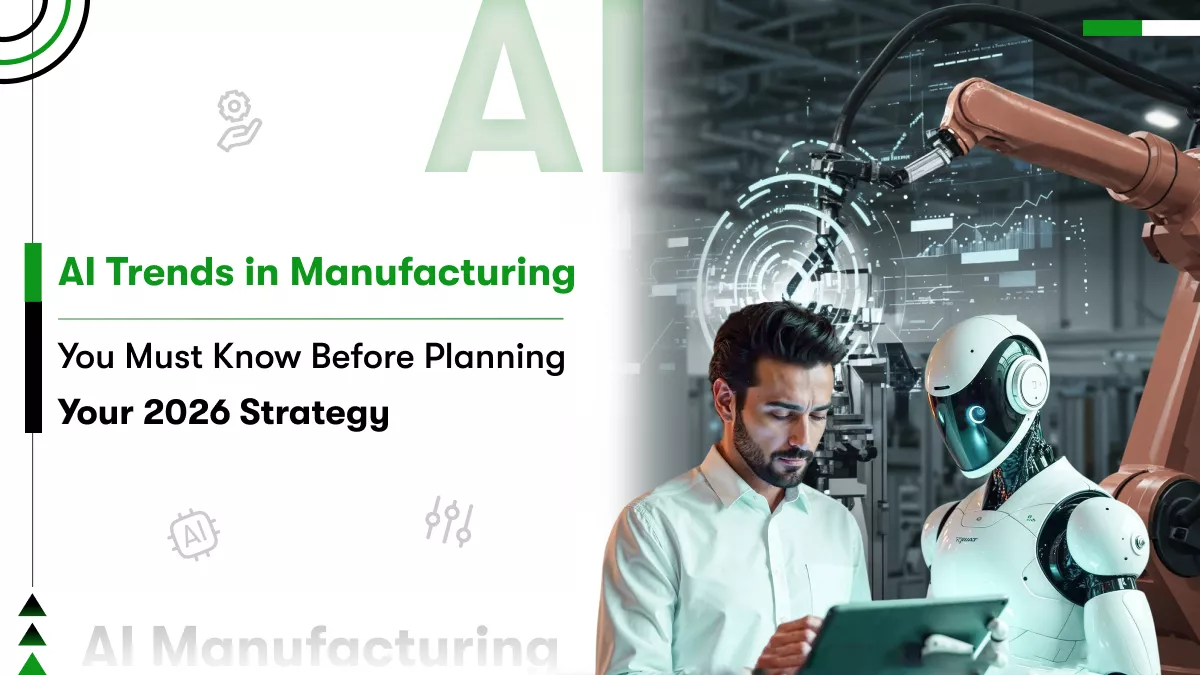

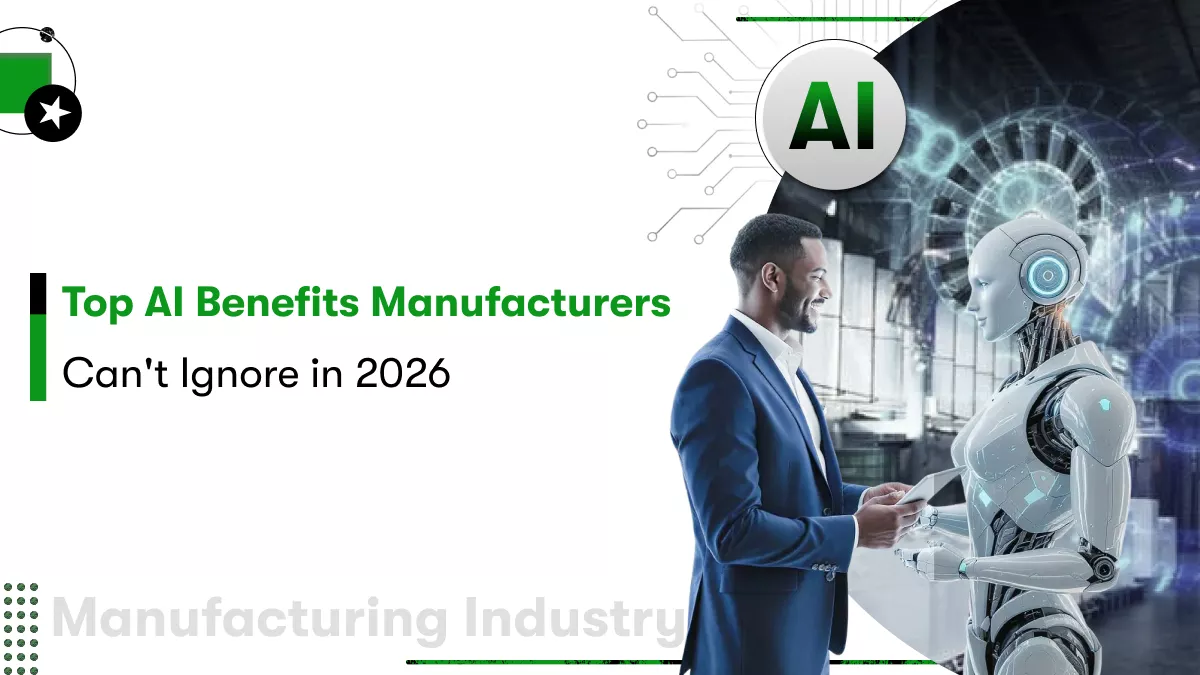
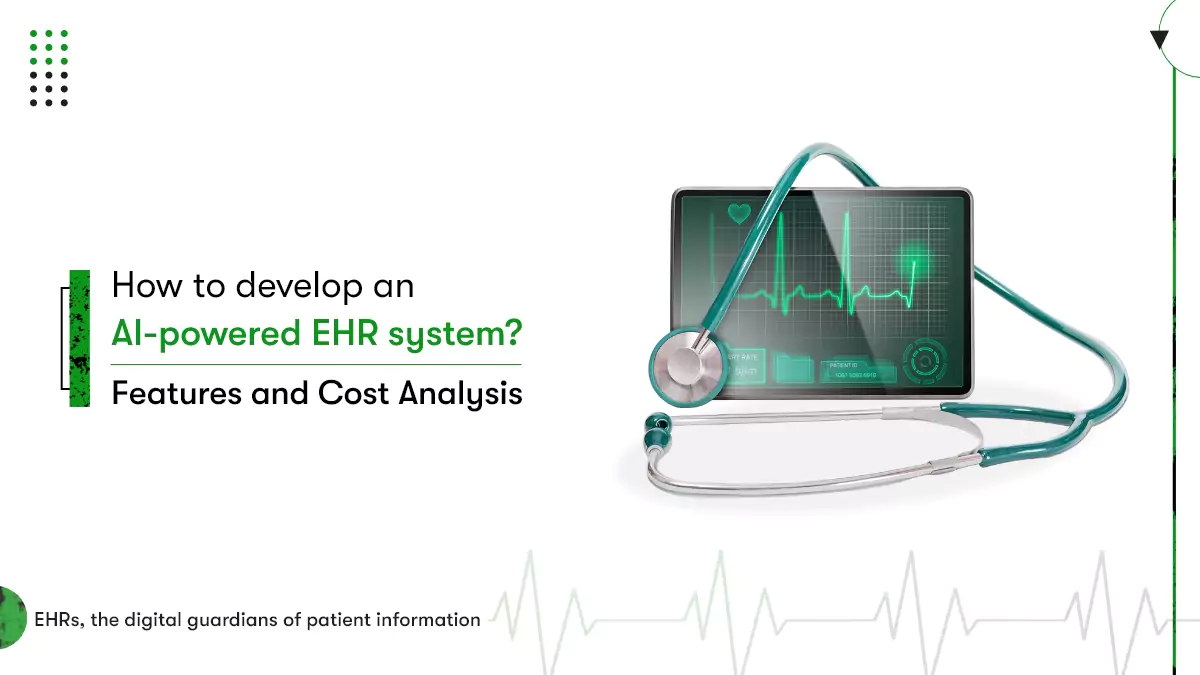






 Contact Information
Contact Information